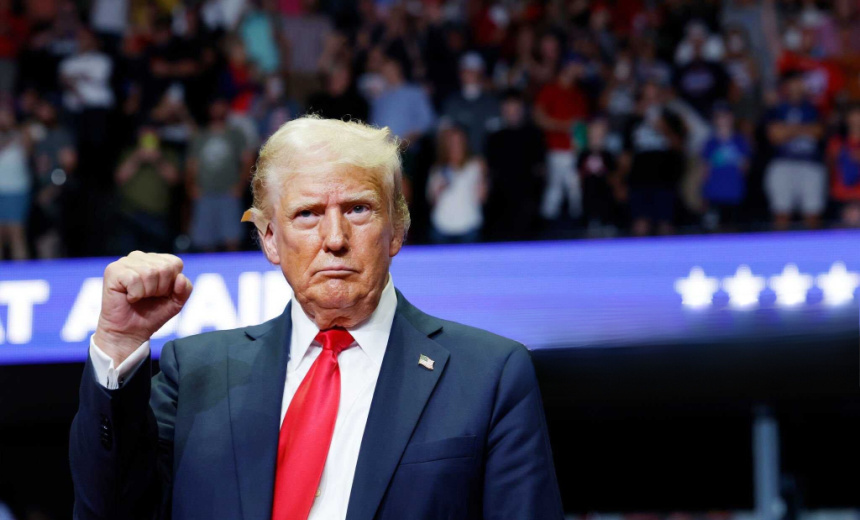Governance & Risk Management
,
Government
,
Industry Specific
Creating ‘Schedule F’ Is a Stated Trump Priority

Newly-sworn in President Donald Trump’s plan to revive policy from his first term that eases the firing of federal employees could disrupt workforce stability, with federal unions and experts warning that weakening federal civil service protections would weaken national security.
See Also: Securing the Nation: FedRAMP-Authorized Identity Security
Trump was sworn in Monday for a second term after vowing along the campaign trail to reinstate key policy goals from his first presidency, including an executive order reclassifying many federal employees as “Schedule F” – a move that could strip civil service protections from government workers. Critics said Trump’s rescinded Schedule F order aimed to replace tens of thousands of nonpartisan federal employees with at-will loyalists, prompting the Biden administration to finalize an April 2024 rule strengthening civil service protections and limiting future reclassifications.
Trump’s pick to lead the Office of Management and Budget, former OMB Director Russel Vought, pledged in a November interview with Tucker Carlson that reinstating Schedule F will be a “day one” priority and should be “viewed maximally” by incoming administration officials. Proponents say a new classification category for federal employees is necessary to ensure presidential administrations have more sway over federal agencies and can more easily dismiss “poor performers” from the civil service.
If successful, the move could put over 50,000 federal jobs at risk, including cybersecurity specialists, IT workers and other critical roles, according to the National Treasury Employees Union.
NTEU National President Doreen Greenwald told reporters during the labor union’s annual legislative conference in February 2024 that reclassifying government IT workers as Schedule F employees could have a “detrimental” impact on the abilities of federal agencies to build, maintain and secure modern systems
Large parts of the cybersecurity workforce would likely be shielded from being swept up into Schedule F due to their relative lack of seniority, said Mark Montgomery, senior director of the Center on Cyber and Technology Innovation. “It’s not a non-zero issue,” he told Information Security Media Group on Monday. But “it’s a much smaller issue than you would see in DOD acquisition or DOD policy management.”
Montgomery, a former Navy rear admiral who was also executive director of the Cyberspace Solarium Commission, said he opposes creation of Schedule F. “I worry about any alterations at the high end of the federal workforce that appear politically motivated in any way,” he said.
If enacted, Schedule F could degrade agency efficiency and effectiveness, while destabilizing intelligence-sharing partnerships with international allies and the private sector, said Steve Lenkart, executive director of the National Federal of Federal Employees. The head of the federal labor union warned in a December 2024 brief to Congress that Schedule F initiatives represent “a concentrated effort to dismantle civil service protections, consolidate political power through corruption and undermine the foundations of democracy.”
During the September Senate Homeland Security Committee hearing, former deputy acting secretary of the Department of Homeland Security Elaine Duke testified that “any potential upside to the tempo of producing national security policy from Schedule F is far outweighed by its disruptive downside of less effective policy.”
“My biggest fear is a degradation of the policy that supports our national security,” Duke told lawmakers about the Schedule F executive order, adding that “unintended consequences will remain unknown until implementation, which is too late to effectively be managed.”
It remains unclear which positions may be affected by a new administration efforts to reclassify federal workers. The Office of Personnel Management did not immediately respond to a request for comment about the potential timeline to reverse the Biden administration’s final rule protecting against reclassifications.
Trump has not yet confirmed when he may reinstate his previous executive order. It’s also not clear if the administration will make changes before issuing a new version of the 2020 action. During his November interview ahead of the inauguration, Vought told Carlson “the president has to move executively as fast and as aggressively as possible, with a radical constitutional perspective to be able to dismantle that bureaucracy and their power centers.”
The Cybersecurity and Infrastructure Security Agency did not immediately respond to a request for comment.
With reporting from Information Security Media Group’s David Perera in Washington, D.C.
